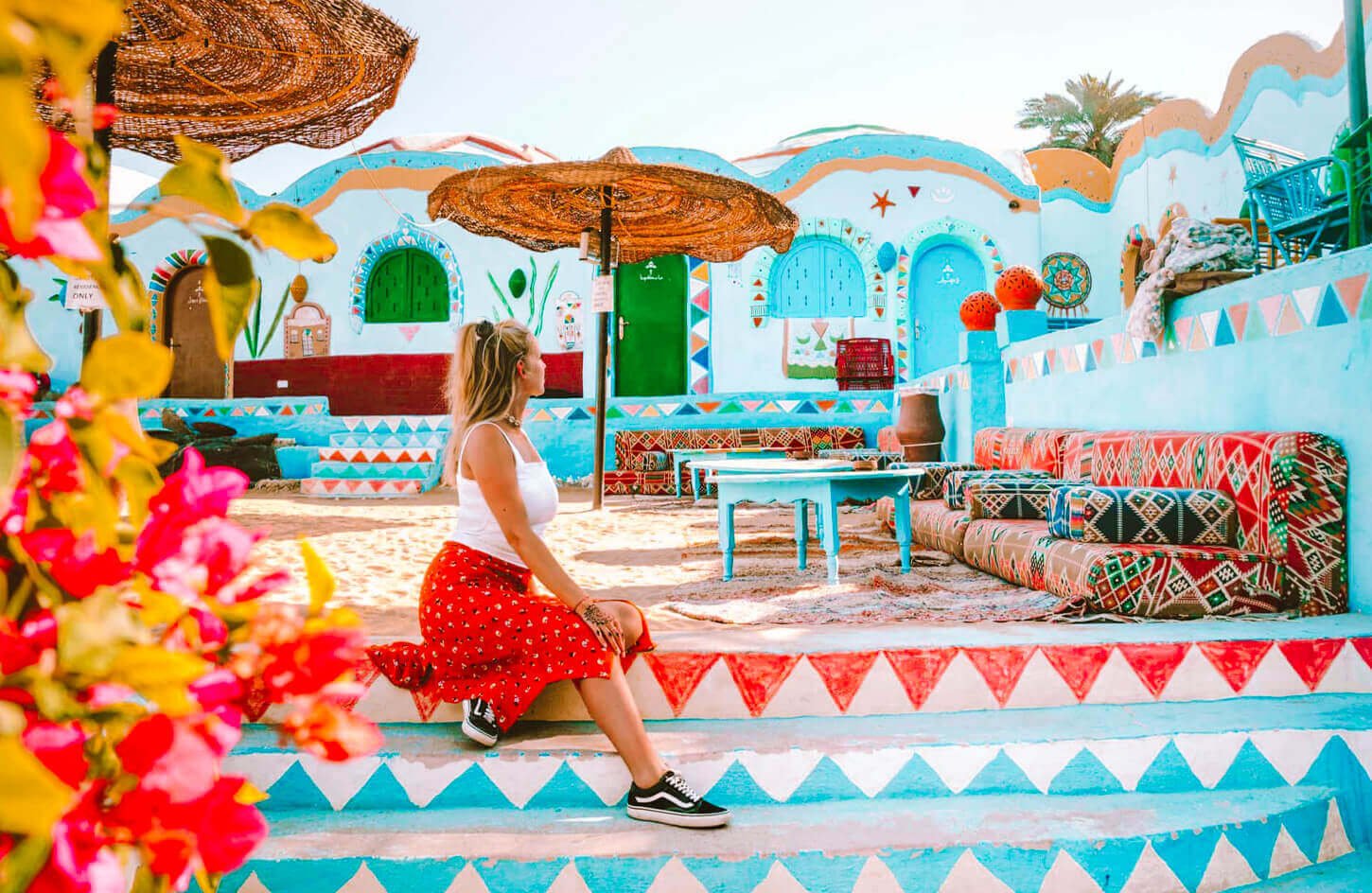
Aswan is one of the most popular cities in Egypt, and you cannot miss it due to its remarkable cultural richness. If you are wondering what things to do in Aswan, we inform you that you are in one of the cities with the most significant number of essential monuments on your visit to the country.
Aswan, ancient Swenet, was the southern border of Ancient Egypt and was known for being the port where goods of gold, wood, and spices arrived, as well as containing large quantities of granite stone (syenite) used to build the great monuments and obelisks. In addition, the Nile Dams that were made to regulate the floods that caused the annual overflows of the river are located there.
Explore our Most Popular Nile Cruise Trips:
If something characterizes Aswan, it is its great cultural and gastronomic wealth. In Aswan are the last descendants of the ancient Egyptians, the Nubians. Taking a felucca ride on the Nile River, visiting Philae Island, or enjoying the city’s most important monuments are some things to see in Aswan, the last landing point for tourist cruises.
The first place to see in Aswan the Unfinished Obelisk. With more than 4 meters long and a weight of more than 1000 tons, we find ourselves before one of the obelisks that the ancient Egyptians could not finish due to the appearance of a crack.
The mystery surrounds the whole place; how could such heavy stone masses be transported? How did they manage to raise the obelisks?
The imagination and the possible answers that we can give to such questions are what make it a magical and unique place. Did the Nile River transport them? Did the Egyptians do it? Was it the work of humans? We will never know for sure, but we are left with the fact that it is an important monument to see in Aswan.
Don’t miss Reading A Quick Review of Nile Cruises in Egypt & Things to Know When Planning a Nile River Cruise in Egypt.
The Philae Temple is located in the middle of the Nile River on the island of Agilkia, only accessible by boat; it is one of the most iconic places and one you undoubtedly have to see in Aswan. Over the years, one of the best-preserved temples was dedicated to the goddess Isis, the goddess of love and motherhood, the wife of Osiris.
According to the ancient Egyptian legend, Seth, the brother of Osiris, murdered and dismembered his brother Osiris, throwing the pieces of his body into the Nile River. His wife, Isis, picked up the pieces, took refuge on the island of Philae, and rebuilt his body to bring him back to life.
The Philae Temple had to be moved from its original location due to the construction of the Aswan Dam as it left it submerged in water, so stone by stone, it had to be moved to the current location, a few meters from the original.
Visiting the Temple of Philae means enjoying an accurate Greco-Egyptian collection of consecrated monuments around the Temple of Philae, where Alexander the Great carried out said cultural fusion. Hadrian’s Gate, Trajan’s Kiosk, the Temple of Hathor, the towers at the entrance to the complex, and the Temple of Horus are some of the monuments you can enjoy on your visit to Agilika Island.
Don’t miss Reading Tipping on Nile Cruises: Top Tips & Advice. & What to pack for Nile Cruise Trip? Top Wearing Tips
If you are thinking of one of the most famous temples for its four gigantic figures of Pharaoh Ramses II, that is the Abu Simbel Temple. One of the best tourist attractions to see in Aswan, leaving by bus or direct flight, we can find two temples: the first and most imposing, the Great Temple, dedicated to Ramses II, worshiped together with the gods Amun, Ra, and Ptah; and the second, the Lesser Temple dedicated to one of the wives of Ramses II, Nefertari.
The construction on the rock of the Great Temple lasted more than 20 years. In it, we can see four seated figures representing Ramses II with the double crown of Upper and Lower Egypt commemorating the victory of the battle of Qadesh, where the Pharaoh fought against the Hittites. At the foot of this, we can find other figures that represent the family of Pharaoh.
Inside we can find the hypostyle room supported by figures of Ramses II, expressing his link to the eternity of the Pharaoh linked to Osiris, the god of the Underworld, in addition to scenes of military battles of the Pharaoh in the war of Qadesh. After the hypostyle room, we will find a second room to see the locations of Pharaoh’s offerings to the gods. Finally, we will access a lobby that gives access to the sanctuary, and we will be able to find one of the most popular areas.
In the sanctuary, we can see four seated figures, Ramesses II deified, Amun, Ra-Horakhti, and Ptah, where the well-known solar phenomenon occurs. The Great Temple of Abu Simbel was built so that during October 21 and February 21 (61 days before and 61 days after the winter solstice), the sun’s rays reached the bottom of the temple, that is, the sanctuary. , so that they illuminated three of the four seated statues (Amun, Ra-Horakthi, and Ramses II), except the statue of the god Ptah, since he was linked to the Underworld (Duat) and always remained in the shadows.
On the other hand, the second temple to see in Aswan is the Lesser Temple, dedicated to the Pharaoh’s favorite wife, Nefertari. Carved in the rock and smaller than the previous one, we will see six colossal figures at the entrance (4 figures of Ramses II and 2 of Nefertari) of the same size. Inside we will find columns and representations of offerings to the gods, as well as the sanctuary room where the figure of the goddess Hathor is found.
Check our article about Felucca Boat: A Romantic and Historical Way to Sail the Nile River.
The Aga Khan Mausoleum was built as a resting place for Sultan Mahommed Shah, the Aga Khan III, located on the west bank of the Nile River in Aswan. You can see on top of the river from a felucca ride along the riverbank.
Built with pink limestone, it is one of the most imposing buildings on the west bank of the Nile, with a solid style for the Fatimid tombs of the time. After his death, his wife was in charge of supervising the construction of the enclosure and buried him two years later in it.
Located in the city of Kom Ombo, very close to Aswan, you can find the Temple of Kom Ombo, a temple dedicated to the gods Sobek, god of fertility and creator of the world represented by the head of a crocodile, and a human body; and the god Haroeris, Horus the old.
A temple is known for having spectacular sunsets and preserves much of its architecture. It is divided into two symmetrical sectors, the south dedicated to the first god; and the second, added later by the area’s inhabitants. Each room has the same structures: an entrance, a hypostyle hall covered and supported by columns, and a sanctuary.
Built in the 2nd century BC, it has excellent Greco-Roman details since, during Roman domination, some reliefs were added where the Roman emperors made offerings to Egyptian deities. In addition, we can find scenes of the god Imhotep with medical instruments of the time, which, curiously, resemble those used in all hospitals today.
Finally, next to the Temple of Kom Ombo, we can visit the Crocodile Museum, where they house mummified crocodiles dedicated to Sobek and inquire more into his history.
The best way to see the sights in Aswan is on a felucca on the river (traditional lateen-sail boat).
A typical short tour lasts about two hours and sails in a circle around the islands in the central area of Aswan. This gives excellent views of the swaying desert dunes on the west bank of the river, the lush islands with palm trees, and the city on the east bank. For more extended tours, plan a half-day or full-day felucca trip with a swimming stop and stops at some central Aswan tourist sites, like the archaeological site on Elephantine Island, Kitchener’s Island, and the Monastery of St. Simeon and Tombs of the Nobles on the west bank.
On a day-long felucca trip to Seheyl Island, you can also head south, up the river, and away from the center of Aswan. There is a Nubian village and a cliff with writing on the island. The 3rd Dynasty Pharaoh Zoser was in charge when a terrible famine happened, and the Famine Stele tells about it.
After a pleasant felucca ride, being able to see Elephantine Island, the Botanical Garden, the well-known Old Cataract Hotel where Agatha Christie stayed for a long time to finish some of her works, and the Aga Khan Mausoleum, we will be able to disembark on the shore of the Nubian village to ride a camel into the heart of the famous Nubian village, direct descendants of the ancient Egyptians.
Walking through its streets means going through the heart of authentic Egyptian culture with colorful houses, craft stalls, spices, and other souvenirs. On your expeditions, you can hire visit a typical Nubian home where you will taste the tea and the possibility of getting a henna tattoo. Without a doubt, it is something that you cannot miss.
The beautiful Monastery of St. Simeon is between the West Bank dunes of the Nile. It is one of Egypt’s most famous and best-preserved Coptic monasteries. It was built in the 7th century CE and stopped being used in the 13th century CE because there wasn’t enough water.
A basilica with aisles fills the south side of the monastery’s courtyard. At the east end of the large nave, where the large apse is, there used to be two domes covering it. There were also three rectangular niches under half-domes. In the center niche, what’s left of a fresco shows Christ sitting on a throne between two angels.
There are smaller buildings and caves to the north and west of the church, while the east side is where people live. Upstairs are more well-kept barrel-vaulted rooms, including the monks’ cells with brick beds and Coptic and Arabic writing on the walls. When you stand on the monastery’s fortified walls and look out over the rolling dunes, you can see how isolated the monks who lived there must have felt.
Check our article How To Get To Egypt? Requirements for traveling to Egypt & Tips for Egypt: Things to Know Before You Travel to Egypt
During the Old and Middle Kingdoms, governors, priests, and other essential people from Elephantine Island were buried in these rock tombs cut into the West Bank’s cliffs.
Just to the left of the boat landing at Gharb Aswan is a set of steep stairs that lead to them.
The governors of the 6th dynasty, Mekhu, and Sabni, were buried in Tombs 25 and 26. The art in both of them is pretty simple and rough.
Tomb 31 belongs to Prince Sarenput II, who lived during the same time as King Amenemhet II of the 12th dynasty. It is up the path to the right, and this is one of the cemetery’s largest and best-kept tombs.
Behind the Tombs of Nobles is a small hallway with three niches on either side. This is the chamber. Look to the left of the first niche to see a very well-colored statue of the dead man and his son.
Inscriptions in Tomb 34 (Harhuf’s tomb) discuss successful trading trips in Nubia.
From here, you can take steps up to the Tomb of Setka (First Intermediate Period), which has badly damaged wall paintings with amazingly bright colors. These are some of the few examples of decorative art from this time that have survived.
The Nubian Museum in Aswan is one of Egypt’s best and a must-see for anyone interested in ancient and modern Nubia’s history and culture. It shows the wealth of a culture almost lost when the Aswan Dam was built and Lake Nasser was made.
There is an excellent collection of artifacts from the Kingdom of Kush (ancient Nubia) and many beautiful black-and-white photos of UNESCO’s fantastic project to save Philae Temple and Abu Simbel from the rising waters of the dam. Many pictures of monuments are now lost forever under the lake’s waters.
There is a statue of Ramses II, a statue of Amenras, the head of the Shpatka, and the black granite head of Tahraqa in the museum’s collection. In the ethnographic section, you can learn a lot about the history of Nubia and its people, and you can also see beautiful handicrafts and folk art from Nubia.
Don’t miss the sagging mud-brick tombs in Aswan’s Fatimid Cemetery, right behind the Nubian Museum. The people who work at the cemetery are happy to give tours and can show you the most interesting tombs. Don’t forget to leave a small tip for them.
Check our article about When is the best time for a Nile cruise? & What Clothes to Pack for the Nile cruise?
Aswan Souq is a shopping lover’s dream. It is just over a kilometer long, and you can find everything from handmade goods and spices to jewelry and clothes. It’s also a great place to try local favorites like Karkadai, a tea made from dried hibiscus flowers that are refreshing and delicious. If you want to do something fun in Aswan, go to the Souq.
Especially for couples and families with kids, camel riding is one of the best things to do in Aswan. If you’re tired from seeing all of Aswan’s historical and heritage sites, you should take a camel ride as a break. Try doing this at the end of the day, around sunset, when the heat isn’t as bad, and you can see the beautiful colors of the sky beyond the dunes. From the west bank of the Nile, near the Tombs of the Nobles, you can ride a camel to the Monastery of Saint Simeon (or vice versa).
Elephantine Island, Abu Simbel, Philae Temple, Unfinished Obelisk, St. Simeon’s Monastery, West Bank, Tomb of the Nobles, Nubian Museum, and Lake Nasser Temples are some of the best places to visit in Aswan.
One of the best things to do in Aswan is to look at the remains of the Roman Empire, ride a camel on the Westbank, explore Elephantine Island, and eat various delicious Egyptian foods.
Aswan is known for its ancient history and rich culture from when the Roman Empire was in power. Cairo is known for its impressive buildings, like Abu Simbel, St. Simeon’s Monastery, and several old churches.
Aswan is a popular place to visit in Egypt, and its nightlife is something no one should miss. Some of the best things to do in Aswan are to see the most famous plays, eat at some of the most popular restaurants, and walk around the city’s beautiful streets.
In Egypt’s modern and commercialized cities and towns, like Cairo, Luxor, and Aswan, many people speak English. Egypt has recently become a popular tourist destination, so some parts of the country also speak European languages.
The best time to go to Aswan is between October and April, when the weather in Egypt is excellent, and it’s easier to enjoy visiting the most popular tourist spots.
For a short trip, you’ll need at least one or two days to see the main sights in Aswan, such as the historical sites. Aswan can be seen in 3–4 days, enough time for a long, relaxing trip.
Check Our Top Nile Cruise Categories:-
Have a Nice Trip!

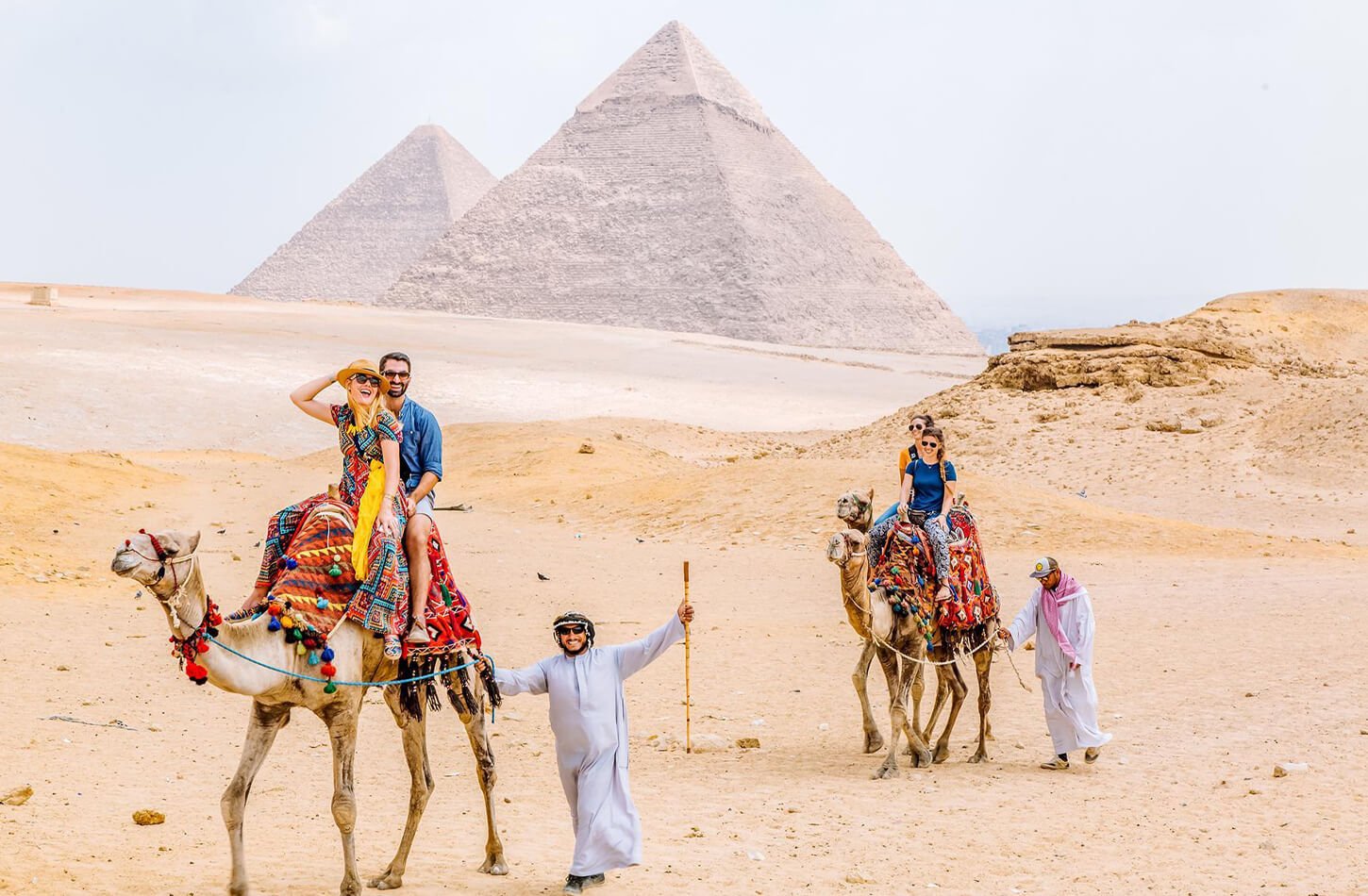
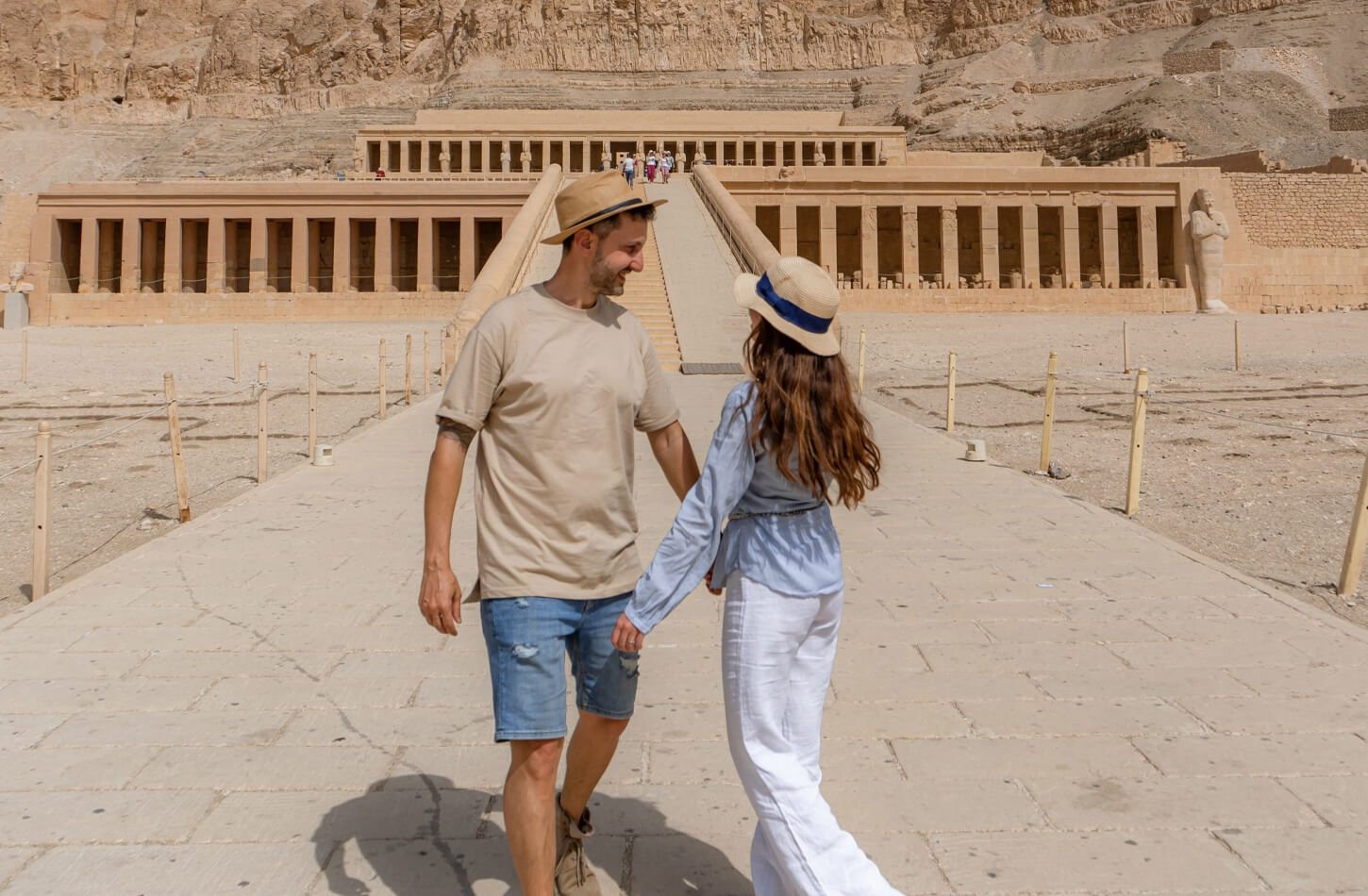
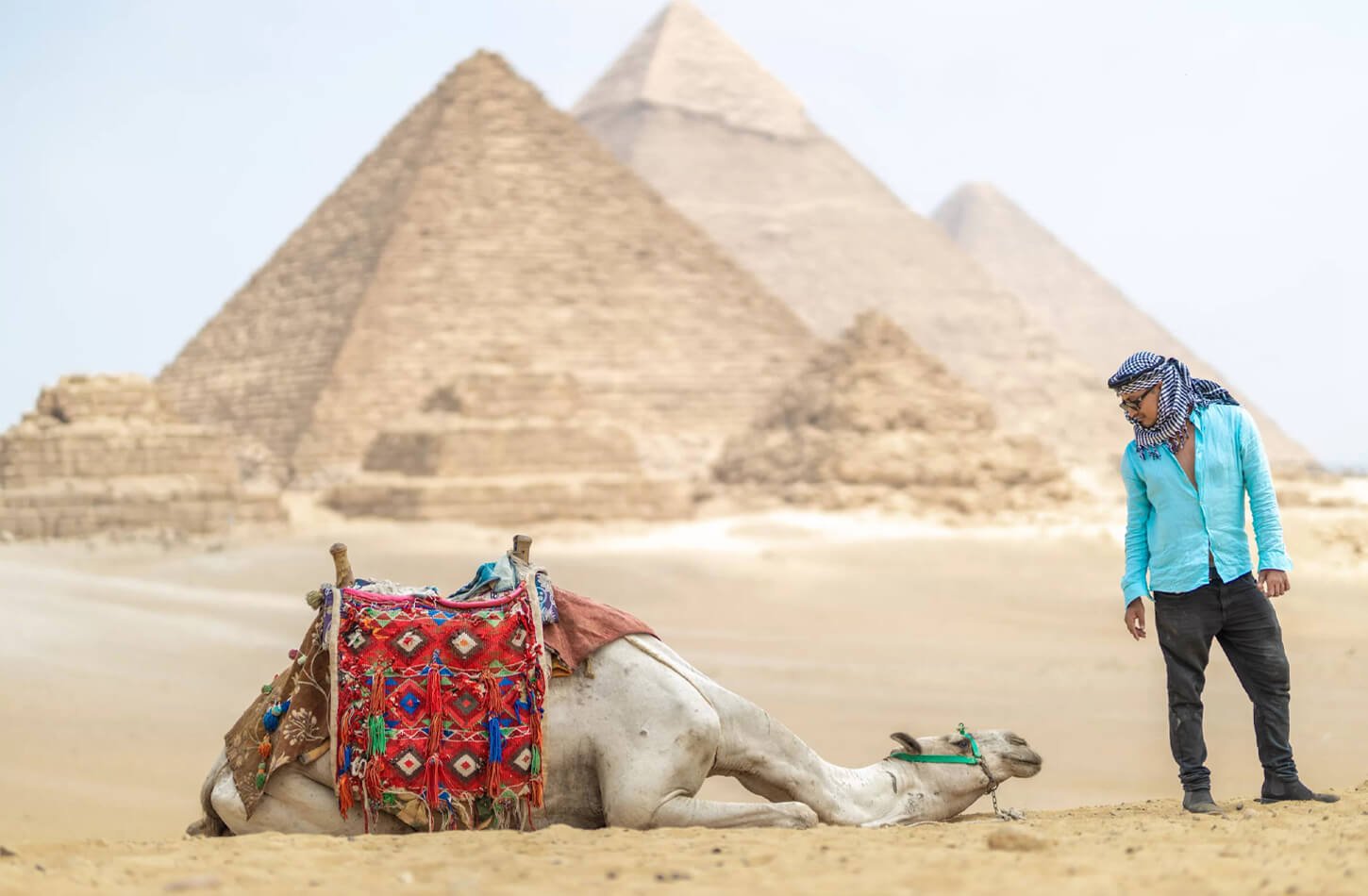
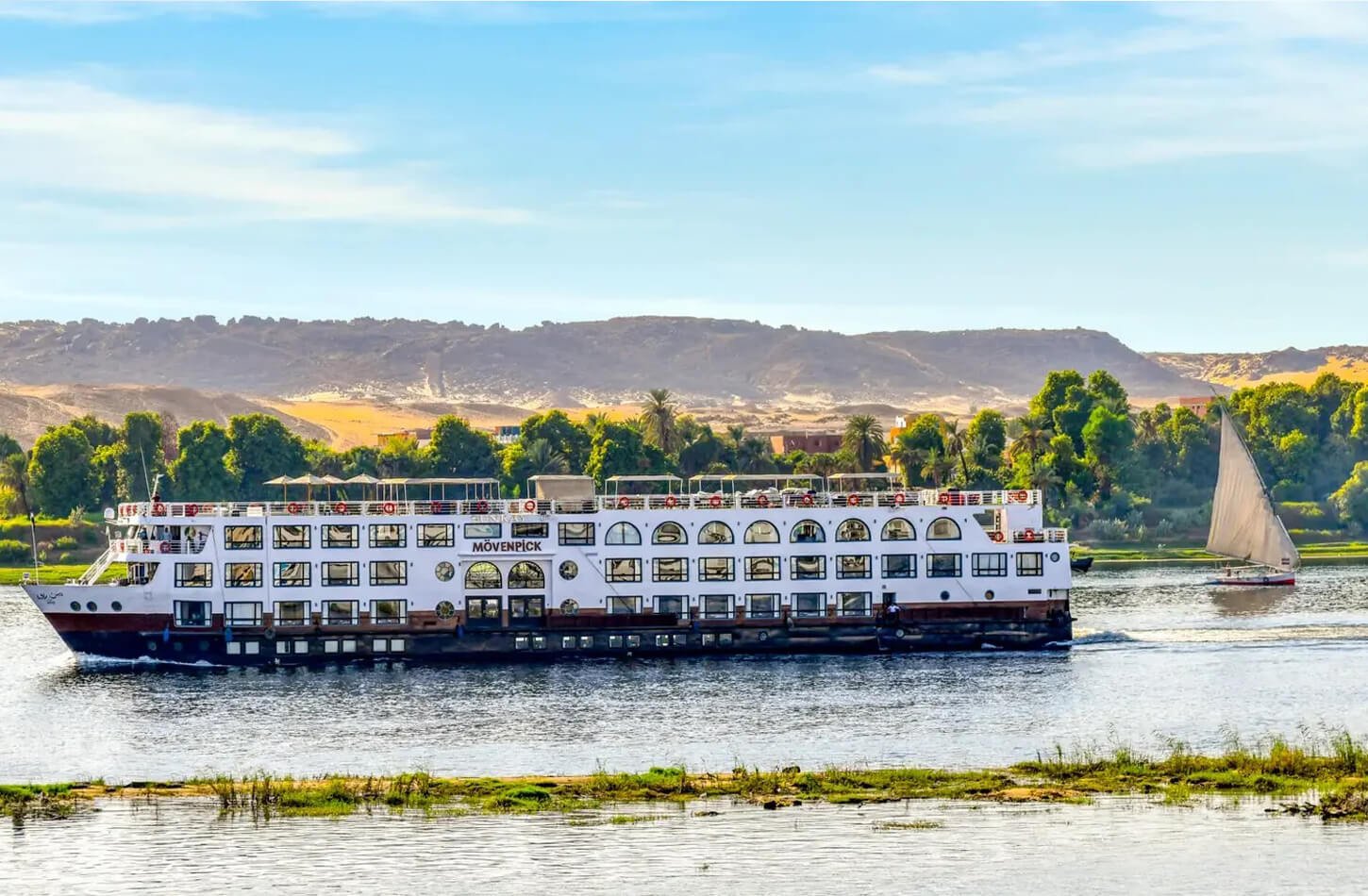


Don't just get there, get there in style.
Information
Follow Us
Payment channels
